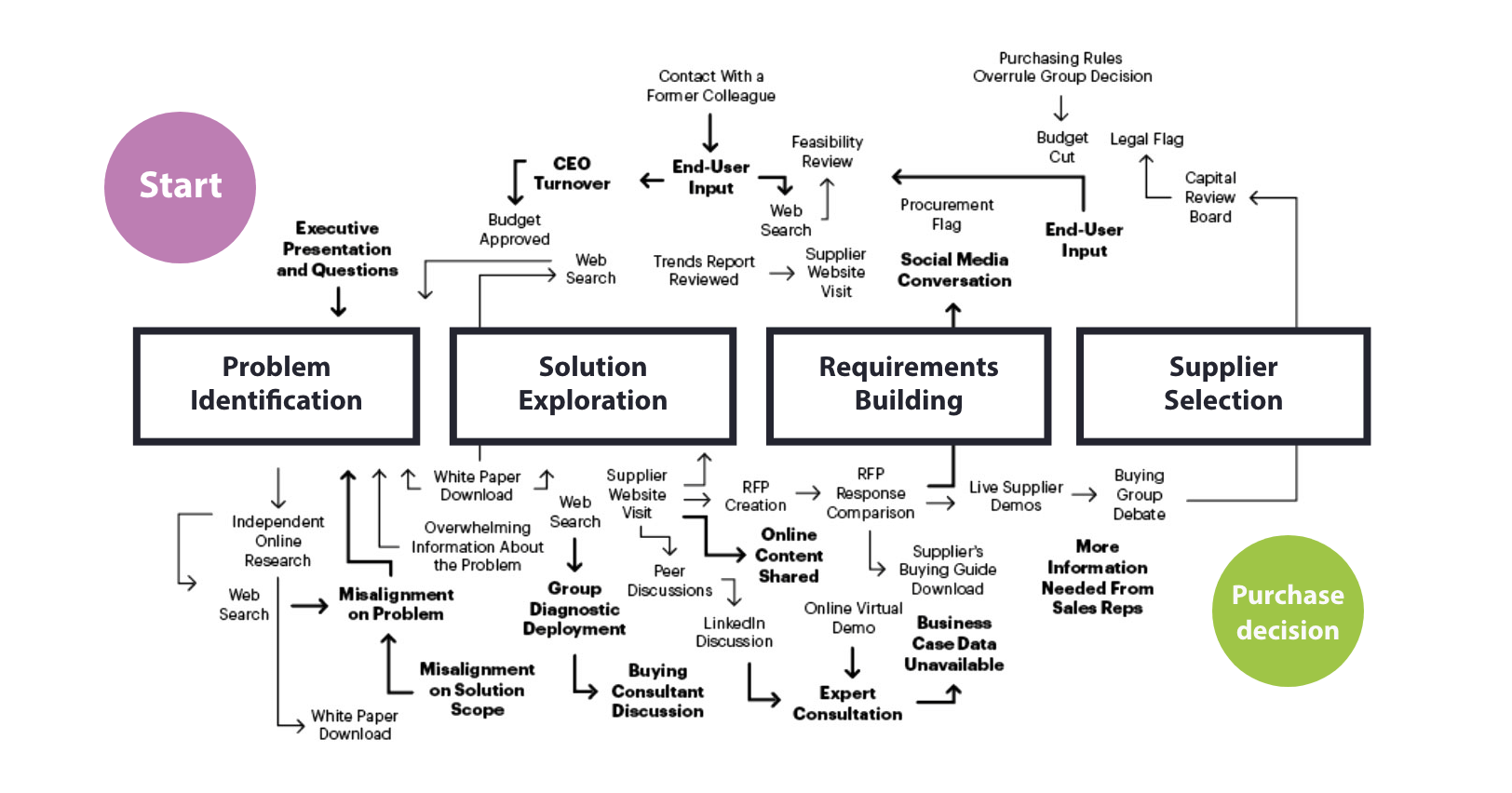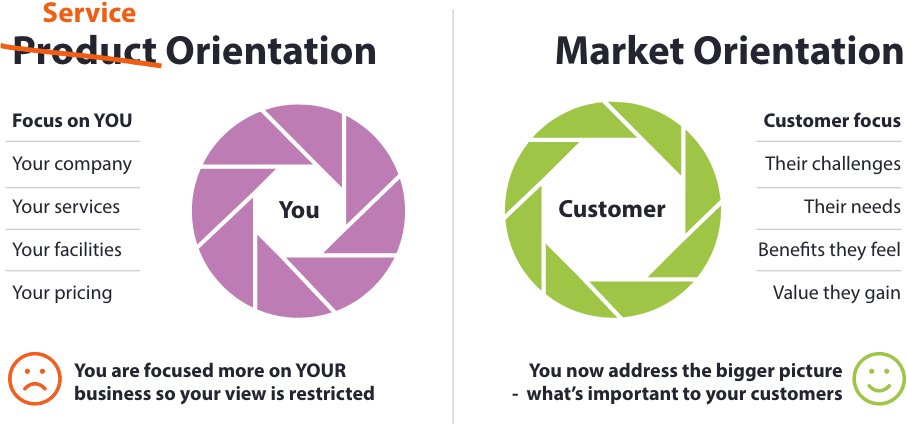The sales cycle for contract manufacturers has remained largely unchanged over the last few decades. Finding potential customers, pursuing leads, conducting initial consultations and compiling proposals for RFQs was a prescriptive sales process that sat solely within the sales department's perview. But buyer behaviour has shifted, and customers today prefer to inform and educate themselves, using tools like Google, before engaging in any sales conversations.
Thanks to the internet and the availability of information right at our fingertips, today’s buyer tends to avoid direct sales contact in favour of pursuing their own research process online. This reality of changing buyer behaviour spells trouble for contract manufacturing companies still reliant on traditional sales channels and processes for growth.
According to Gartner, 75% of B2B buyers prefer a rep-free sales experience. This highlights the need for a change in strategy and approach when it comes to acquiring customers. So, what tactics can your teams leverage to influence buyer behaviour before your prospects even speak to you? Let’s find out.
Navigating the complex buyer’s journey
Buyers have reported that gathering information online is superior to interacting with a sales representative when looking for solutions – and there is a myriad of resources and digital tools at the ready that they tap into to aid their purchasing decisions. Yet the buyer’s journey grows ever more complex, as does customer buying behaviour.

Even with easy access to the answers they’re looking for, the buyer’s journey is still riddled with twists and turns that marketing and sales efforts need to account for when influencing buyer behaviour and encouraging buyers to commit to purchasing. Luckily, every bend along the buyer’s journey presents an opportunity to engage with your prospective buyer in a meaningful, non-intrusive way, with enticing messaging and content that answers their questions.
Influencing buyer behaviour with a customer-centric approach
In the age of inbound and content marketing, influencing buyer behaviour through a customer-centric approach is a necessary precursor for growth. This involves engaging with potential clients well before they actively seek solutions to their business challenges, and in some cases, before they even know such challenges exist.
Influencing buyer behaviour in this way requires a shift from simply identifying and responding to demand in the market to actively generating demand. By preemptively engaging with potential customers, your brand can establish a dialogue with them, effectively speaking to their needs, aspirations, and pain points.

It’s all about attracting the right-fit prospects into your brand's orbit and engaging them meaningfully - by being helpful, informative, and insightful - long before the traditional sales process begins.
From this position of influence, you can convert these engaged audiences into MQLs and, eventually, SQLs, by consistently providing a valuable customer experience and building strong, trust-based relationships. In this way, marketing becomes not just a funnel to sales but an integral part of building lasting customer relationships that, in turn, influence buyer behaviour.
Five useful tactics for influencing buyer behaviour
So, how can you attract your ideal customers and start influencing their buying behaviour? Try these 5 tactics:
1. Be present on social media
Creating a strong social media presence, particularly on LinkedIn, allows you to connect with potential buyers and build awareness of your brand. Instead of sitting back and waiting for folks to come to you with their needs, social media puts your brand out there and provides a platform for sparking conversations and attracting relevant prospects who find value in the information you provide. Not to mention the added benefit of getting data insights into the psychological, cultural and social factors driving their buying decisions.
- Create interesting content that you publish regularly
- Weigh in on industry topics and conversations
- Join relevant groups
2. Improve your online visibility with blogs
Gartner has already predicted that 80% of B2B sales interactions between suppliers and buyers will occur in digital channels by 2025, so it’s worth having a well-established digital presence. Blogging is a great way to increase online visibility, foster discovery, and establish yourself as an authority in the manufacturing industry.
Share your expertise and provide valuable insights to your audience through a well-turned blog optimised for top-of-funnel search terms. If your blog does a good enough job, buyers will clock your brand as helpful to their purchasing decision process and remember you in future.
3. Become a thought leader
Speaking of establishing yourself as an industry authority, becoming a sought-after industry expert is a sure way to win the trust of prospects and influence their buyer behaviour down the line. Position yourself as a thought leader by sharing expert knowledge that sets you apart. This can be through:
- White papers, case studies and eBooks
- Speaking at industry events
- Writing articles
- Contributing to industry publications.
4. Leverage video
In the world of digital content, video is king. In fact, after Google, YouTube is the second-most visited website in the world – a goldmine of opportunity if you know how to leverage video as part of your overall marketing strategy.
Video is a powerful tool for creating brand awareness, engaging with your audience and showcasing your services. You can spotlight your on-the-ground production processes and how they work, highlight technological innovations you've implemented, create customer tutorials, or even go behind the scenes and introduce some of your people to build trust with potential buyers, influencing their buyer behaviour.
5. Build your brand
In a world bombarded with choices, a distinctive brand identity cuts through the noise, guiding prospects and turning potential buyers into long-term customers.
Building a brand is like crafting a story that resonates deeply with your audience, creating an emotional connection that’s key to influencing buyer behaviour. When people feel connected to your brand, they're more likely to trust you, choose you over competitors, and even advocate for you to others.
But it's about more than a catchy logo or a slick tagline. A strong brand not only influences buyer behaviour but shapes it, creating a strong community of customers who can vouch for what you do, thus fostering brand loyalty.
Summary
Although buyers’ preferences are constantly changing and shaped by their digital experiences, not all hope is lost. Taking a customer-centric stance, you can start proactively generating demand for your contract manufacturing business that catapults growth, instead of reactively responding to demand as and when it arises.
By building a solid brand, becoming an authoritative industry expert, and leveraging tools like blogging, social media and video, you can influence the buyer behaviours of potential customers better than before, bringing your contract manufacturing sales cycle and marketing strategy in step with the modern-day customer’s expectations.


